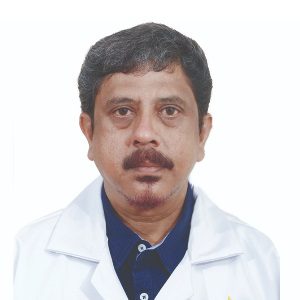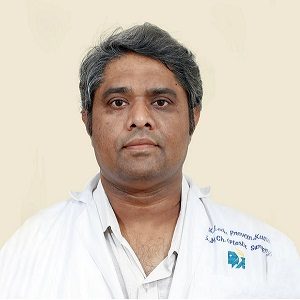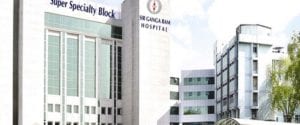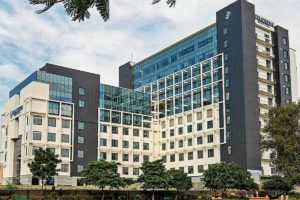Best Doctors in India for Laser Resurfacing
- Plastic Surgeon and Cosmetic Surgeon, Chennai, India
- Over 14 years’ experience
Profile Highlights:
- Dr. Kannan Prema is a bright young cosmetic surgeon in Chennai, working on aesthetics.
- With over 14 years of experience as a board-certified cosmetic surgeon, Dr. Kannan Prema is the ideal choice.
- She provides surgical treatments like breast reduction, Rhinoplasty, removal of skin tags, buttock liposuction, etc.
- Plastic Surgeon and Cosmetic Surgeon, Chennai, India
- Over 16 years’ experience
Profile Highlights:
- Dr. Kumaresan M N is one of the finest Cosmetic Surgeons in Chennai with nearly 16 years of experience in the field.
- He ensures the best aesthetics for his patients.
- The Tamil Nadu Medical Council has had him as a member since 1992.
- Plastic Surgeon and Cosmetic Surgeon, Chennai, India
- Over 22 years’ experience
Profile Highlights:
- Dr. Leela Praveen Kumar is one of the top Plastic Surgeons in Chennai with more than 22 years of dedicated experience.
- The doctor is frequently visited by the patients for Breast implants, Vaser Liposuction, rhinoplasty, facelift, Breast Reduction, Bariatric Surgery, Microsurgery, Body contouring, Hand surgery, and Onco Reconstruction.
- Dr. Leela Praveen Kumar also manages a non-Surgical fat reduction procedure, known as Cryolipolysis.
- Plastic Surgeon and Cosmetic Surgeon, Chennai, India
- Over 40 years’ experience
Profile Highlights:
- Dr. Sundararajan M S is one of the best Plastic Surgeons in India, having practiced for more than 40 years.
- The doctor offers lipo filling, body contouring, non-Surgical facelift, tummy tuck, implants, etc.
- Dr. Sundarajan bagged the Best paper award in 2008 & 2013 and the other Gold Medal for his contribution to the field.
- Plastic Surgeon, Cosmetic Surgeon, Gurugram, India
- Over 25 years’ experience
Profile Highlights:
- Dr. Aditya Aggarwal has been an eminent figure in the Department of Plastic, Aesthetic, and Reconstructive Surgery.
- Throughout his career, he has invested in microsurgical procedures of physical amputation across the globe.
- He has worked in India, Berlin, Taiwan, and Japan, and his bright career echoes from each corner of the world.
Best Hospitals in India for Laser Resurfacing
Narayana Superspeciality Hospital, Gurugram
- City: Gurugram, India
Hospital Highlights:
- Situated near DLF Cyber City, Gurugram, Narayana Superspecialty Hospital is one of the top medical facilities in the Delhi NCR region, catering to the needs of the people. Known for its commitment to quality medical care and patient service, the hospital is a state-of-the-art facility with planned and well-equipped sections, which includes a spacious OPD area as well as comfortable patient rooms.
- It is the closest super-specialty hospital from Indira Gandhi International Airport towards Gurugram, and also the nearest super specialty hospital from DLF Cyber City. It is also close to major residential areas in Gurugram.
- It is part of the renowned Narayana Health Group. Established in 2000, by Dr. Devi Shetty, a renowned cardiac surgeon, it has grown to be one fo India’s leading healthcare groups.
Sir Ganga Ram Hospital, New Delhi
- City: New Delhi, India
Hospital Highlights:
- Sir Ganga Ram Hospital, New Delhi is known to provide the latest medical procedures with the latest technology in all of its units.
- The hospital has a team of reputed doctors, nurses, and healthcare professionals that ensure that patients receive quality care at affordable costs.
- Staffed with a team of highly qualified doctors, dedicated nurses, and paramedical and non-medical staff, the hospital aims to lead in healthcare delivery, medical education, training, and research.
- As per the vision of the founder, the hospital also provides free treatment to the economically weaker sections of society.
- Sir Ganga Ram Hospital also provides training to young doctors under the Diplomate in National Board(DNB) program. The DNB program at the hospital was started in 1984 and it is known for currently running the maximum number of DNB specialties in the country. It also has the distinction of having the first bone bank in India.
KIMS Hospital, Hyderabad
- City: Hyderabad, India
Hospital Highlights:
- KIMS Hospital (a brand name of Krishna Institute of Medical Sciences) is one of the largest and best multi-speciality hospitals in Hyderabad. The hospital provides various treatments to an enormous number of patients.
- The hospital has a capacity of more than 3000 beds. KIMS Hospitals offers different healthcare services in more than 25 specialities and super specialities.
- The hospital is equipped with modern medical equipment and technology. It has robotic equipment to provide minimal invasive techniques for patients.
- The hospital is aimed at providing world-class healthcare facilities and services at an affordable cost for patients.
- The various specialities and departments of the hospital include neurosciences, gastroenterology & hepatology, robotic science, reproductive sciences, dental science, oncological sciences, organ transplantation, heart and lung transplantation and mother and child care.
Fortis Hospital, Shalimar Bagh
- City: New Delhi, India
Hospital Highlights:
- Fortis Hospital in Shalimar Bagh is a multi-super specialty hospital that strives to provide world-class patient care by leaving no stone unturned.
- Fortis, Shalimar Bagh, with 262 beds and a 7.34-acre footprint, provides the best level of medical care through its team of doctors, nurses, technicians, and management professionals.
Reliance Hospital, Mumbai
- City: Mumbai, India
Hospital Highlights:
- Reliance Hospital is one of the best super-specialty care hospitals in Navi Mumbai.
- The main purpose of this hospital is to become a trustworthy place for the best health and hope for society. The hospital is well connected to the suburbs of Mumbai and Navi Mumbai.
- The hospital has various specialty departments, viz., Accident & Emergency, Anesthesiology, Dental Services, Dermatology, Diabetology, Dietetics Nutrition, Endocrinology, ENT, Gastroenterology, General Surgery, Gynaecology And Obstetrics, Hepato Pancreato Biliary Surgery, Infectious Disease, Internal Medicine, Interventional Radiology, Laboratory Medicine, Minimal Access Laparoscopic Surgery, Nephrology, Neurosciences, Opthalmology, Orthopaedics, Paediatrics, Pain Management Palliative Care, Physical Medicine Rehabilitation, Plastic And Reconstructive Surgery, Psychiatry, Pulmonary Medicine, Radiology, Rheumatology, Transplant, Urology Andrology, Vascular Surgery
Lilavati Hospital & Research Centre, Mumbai
- City: Mumbai, India
Hospital Highlights:
- Lilavati Hospital & Research Centre is India’s premier multi-speciality tertiary care hospital and has been recognised as a global medical excellence centre.
- Lilavati Hospital & Research Centre has built an unrivalled level of trust with its patients over the years, thanks to a solid foundation that comprises cutting-edge facilities, the best medical competence, research, education, and charity endeavours.
- The hospital is quite proud of the fact that it now serves patients from all kinds of backgrounds, not just from the United States but from all around the world.
- The hospital has a total of 323 beds, one of the largest Intensive Care Units (ICUs), 12 Operation Theatres with modern amenities, over 300 consultants, and almost 1,800 personnel.
Venkateshwar Hospital, Dwarka, New Delhi
- City: New Delhi, India
Hospital Highlights:
- State-of-the-art technology and devoted healthcare professionals have been brought together under one roof at Venkateshwar Hospital to provide genuine medical care. The hospital’s professionals work together as a team to deliver the best possible treatment to their patients, using the most sophisticated equipment and information technology.
- Venkateshwar Hospital’s mission is to attain global excellence in healthcare by employing evidence-based, ethical clinical practices and cutting-edge technology by a team of highly skilled experts.
Laser Resurfacing
Laser resurfacing is a treatment for reducing facial wrinkles as well as skin irregularities such as blemishes or acne scars.
This technique can help to decrease the appearance of fine lines on your face. It is able to treat loss of skin tone as well as improve complexion if you are having scars or sun damage. This procedure is also termed as lasabrasion, laser peel or laser vaporization.
Purpose
Laser resurfacing can be used for treating:
- Fine wrinkles
- Age spots
- Mild to moderate acne scars
- Uneven skin tone or texture
- Sun-damaged skin
If you have acne or if your skin is too dark, then you might not be a candidate for this procedure. This technique is also not recommended for stretch marks. You can discuss with your doctor whether this procedure is right for you with your doctor before you choose to undergo it.
Preparation
Before you undergo laser resurfacing, your doctor will ask about your medical history. You will need to answer questions about any current and past medical conditions as well as any medications that you take or have taken recently. You will also need to inform about any cosmetic procedures that you have had in the past.
Your doctor will next inspect your skin and the area where the treatment will be performed. This will help your doctor determine what changes can be made and how your physical features, might affect the results.
It is important to discuss with your doctor about your expectations and potential risks. Make sure you understand how long it will require for you to heal and what your results might be.
Before the procedure, you might need to take a few medications to prevent complications. You will also need to avoid unprotected exposure to the sun. If you smoke, you will need to stop smoking at least two weeks after the treatment. You will also need to arrange for someone to take you home.
Procedure
Laser resurfacing is generally done by a plastic surgeon or a dermatologist. It is performed as an outpatient procedure, which means you will not need to stay overnight after the procedure.
Your doctor might choose to treat your entire face or the wrinkles around your eyes, forehead or mouth individually. For small areas, a local anesthetic will be used for numbing the area.
If the method is used for the procedure is ablative laser resurfacing, then an intense beam of light energy is directed at your skin. This beam destroys the outer layer of the skin. At the same time, the laser heals the underlying skin, which is known to stimulate collagen production over time, which results in better skin tone and texture. Ablative laser resurfacing can generally take between 30 minutes and two hours.
If you undergo nonablative laser treatment, it will consist of a series of treatments that will be scheduled over the course of a few weeks or months.
After the procedure
After the procedure, the treated skin will be raw, swollen and itchy. Your doctor will be applying a thick ointment to the treated skin and may also need to cover the area with an airtight and watertight dressing. You might also require a pain reliever and use cool compresses.
In around a week or two, new skin will cover the area. During this time, avoid using any products such as sunscreens or cosmetics that can cause irritation in your face. Also avoid activities like swimming that can increase your risks of infections.
After laser resurfacing for around one year, it is recommended to avoid too much exposure to the sun. Also, keep in mind that your results might not be permanent. As you continue to age, you will continue to get lines by smiling or squinting.
Risks
Ablative laser resurfacing can lead to various side effects, some of them including:
Redness, swelling and itching- The skin which is treated may become itchy, swollen and red. Redness can be intense and might even last for several months. The aggravation of an existing skin condition such as rosacea, can sometimes contribute to redness.
Infection- In a few cases, ablative laser resurfacing can lead to bacterial, fungal or viral infections. The most common infection is a flare-up of the herpes virus.
Acne- If you apply thick creams and bandages to your face after treatment, it can sometimes worsen acne or even cause you to temporarily develop tiny white bumps termed as milia, on the treated skin.
Scarring- Ablative laser resurfacing also poses a slight risk of permanent scarring.
Turning of the eyelid- Although this is rare, ablative laser resurfacing done near the lower eyelid can cause the eyelid to turn out and expose the inner surface.
Changes in skin color- Ablative laser resurfacing may even cause your treated skin to become darker than it was before the treatment or in some cases, lighter. This happens usually a few weeks after laser resurfacing. Permanent changes in skin color are generally more common among people having darker skin.
Nonablative laser resurfacing also sometimes lead to side effects, such as:
- Infection- Nonablative laser resurfacing can also cause a flare-up of the herpes virus.
- Mild swelling and redness- You might also experience swelling and redness typically last only hours or days.
- Changes in skin color- Nonablative laser resurfacing can cause your treated skin to become darker than it was before treatment, though this should be temporary
It is also noteworthy that laser resurfacing is not for everyone. You might not be a candidate for this procedure if you:
- Are suffering from an autoimmune disease or a weak immune system
- Have a tendency to form scars
- Are prone to cold sores
- Have had a recent outbreak of cold sores or the herpes virus
- Have a darker skin tone
- Have had radiation therapy to the face
- Are pregnant or breastfeeding













